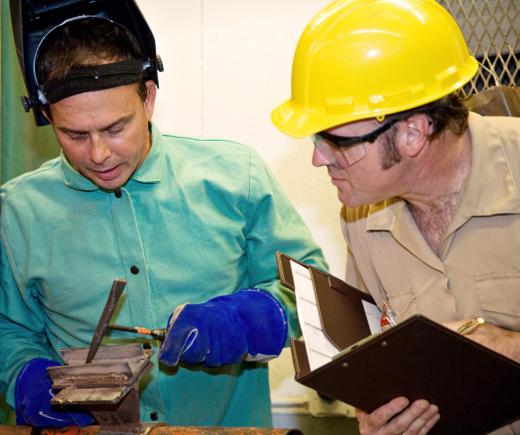Process control is widely used in factories and other automated environments to keep systems running efficiently. In general, process control technology is intended to monitor sensors and adjust important variables according to the readings. This technology allows complex operations to be managed by a relatively small group of people, and helps ensure that a desired outcome is consistently achieved. There are four main types of process control technology, each with different capabilities.
Single loop process control is a relatively simple form of automation. This approach uses basic controllers to activate or deactivate processes in a very linear and predictable manner. Simple electronic relays are one example of components that are commonly found in a single loop system. This type of process control is often used to move a part through sequential stages of an assembly line from beginning to end, with very few variations in the cycle "loop." Single loop technology typically only allows the automated cycle to be started or stopped, but not modified.

Sequence controllers are a class of process control technology that allows an automated cycle to be adjusted or re-directed. A programmable logic controller (PLC) is often used for this type of control. PLCs and other similar devices are able to monitor sensors and trigger a different sequence of operations outside the main automated cycle. A factory that is able to sense a defective product and then re-route the assembly line to a different area for inspection is an example of sequence control.

Distributed control systems (DCS) are able to monitor and control very complicated processes. While a sequence controller is usually able to modify an automated sequence at only one location, a DCS can control many different variations or "branches" of process. A distributed control system is often able to stop and start an assembly line, re-direct products to several locations, and vary the speed of an assembly line as needed. A DCS enables a wide variety of variables to be adjusted automatically, which usually improves the quality of a production system.

Supervisory control and data acquisition (SCADA) systems consist of the most complex process control technology. A SCADA system is usually used in large-scale factories, and is often monitored and adjusted from a manned central control center. In addition to the standard features of a DCS, a SCADA system also permits operations to be programmed on a schedule. For example, this schedule can be used to activate a diagnostic sequence every hour in order to automatically check machines for malfunctions. SCADA technology is designed to monitor a wide array of sensors, and adjust many diverse aspects of an automated process.









